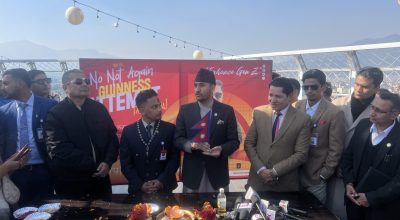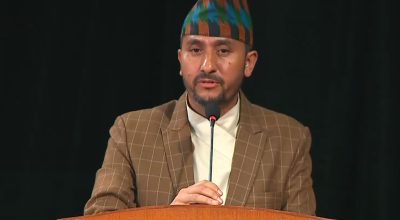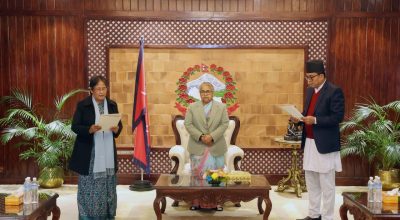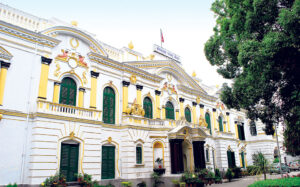
Nine out of the world’s 10 cities with the worst air pollution are in South Asia. South Asians are exposed to extremely unhealthy levels of ambient air pollution, especially in densely populated, poor locations. The World Health Organization’s (WHO) Air Quality Guideline recommends that concentrations of PM2.5—small dust or soot particles in the air—should not exceed an annual average of 5 micrograms per cubic meter (μg/m3). But in South Asia, nearly 60 percent of the population lives in areas where concentrations of PM 2.5 exceed an annual mean of 35 μg/m3. In the densely populated Indo-Gangetic Plain, it is over 20 times the level that the WHO considers healthy (100 μg/m 3 in several locations).
Ambient air pollution is a public health crisis for South Asia, not only imposing high economic costs but also causing an estimated 2 million premature deaths each year. The health impacts of air pollution range from respiratory infections to chronic diseases, and from serious discomfort to morbidity and premature mortality. This drives up health-care costs, lowers productive capacity, and accounts for lost days worked.
Some of the main causes of air pollution in South Asia are unique to the region. Sources of air pollution that are less important in other parts of the world make substantial additional contributions to the pollution load in South Asia. These include: solid fuel combustion in the residential sector for cooking and heating; small industries, including brick kilns; burning high-emission solid fuels; the current management practices of municipal waste in the region, including burning plastics; the inefficient application of mineral fertilizer; fireworks; and human cremation.
Significant air pollution in South Asia is also generated in agriculture, including through the generation of secondary particulate matter in the form of ammonia (NH₃) emissions from imbalanced fertilizer use and livestock manure that reacts with nitrogen oxides (NOx) and sulfur dioxide (SO₂) gases from energy, industry, and transportation sources. In the western part of South Asia, natural sources, such as dust, organic compounds from plants, sea salt, and forest fires, are an important source of air pollution.
Controlling ambient air pollution is difficult without a better understanding of the activities that emit particulate matter and how emissions travel across locations. Air pollution travels long distances within South Asia, crossing municipal, state, and national boundaries, depending on wind, climatology, and cloud chemistry. At any given location, PM2.5 in ambient air originates from several upwind sources extending over several hundred kilometers.
This is especially true in and around the Indo-Gangetic Plain. For example, nearly 25 percent of the fine particulate matter that residents of the city of Patna are exposed to has its origin in a neighboring state. In many cities, such as Dhaka, Kathmandu, and Colombo, only one-third of the air pollution originates within the city.
This report identifies six major airsheds in South Asia where spatial interdependence in air quality is high. Although air pollution travels far in South Asia, it does not uniformly disperse over the continent, but gets trapped in large “airsheds” that are shaped by climatology and geography. This report identifies six major airsheds in South Asia where spatial interdependence in air quality is high: (1) West/Central Indo-Gangetic Plain: Punjab (Pakistan), Punjab (India), Haryana, part of Rajasthan, Chandigarh, Delhi, Uttar Pradesh; (2) Central/Eastern Indo-Gangetic Plain: Bihar, West Bengal, Jharkhand, Bangladesh; (3) Middle India: Odisha/Chhattisgarh; (4) Middle India: Eastern Gujarat/Western Maharashtra; (5) Northern/Central Indus River Plain: Pakistan, part of Afghanistan; and (6) Southern Indus Plain and further west: South Pakistan, Western Afghanistan extending into Eastern Iran.
This report uses a detailed geospatial model to quantify particulate matter emissions and how they disperse in the atmosphere. The Greenhouse Gas and Air Pollution Interactions and Synergies (GAINS) model employed in this report computes the annual averages of PM 2.5 concentrations to which residents of every state/province (hereafter referred to as “region”) of South Asia are exposed. It also computes PM 2.5 exposure at the city level, and determines the place and the sector of origin of this ambient air pollution in each region and city.
The report shows that current policy measures will only be partially successful in reducing PM2.5 concentrations across South Asia, even if fully implemented. The report’s model estimates that air quality policy measures in place as of 2018 can have a significant impact on the trajectory of air pollution in South Asia, if fully implemented and effectively enforced.
For example, primary fine particulate matter (such as soot and mineral dust) would decline by 4 percent rather than grow by 12 percent between 2018 and 2030, regionwide. But large parts of South Asia—accounting for about two-thirds of its total population—will still miss the least-ambitious WHO Interim Target 1 of 35 μg/m³ concentration.
Even if all technically feasible measures were fully implemented, parts of South Asia would still not be able to meet the WHO Interim Target on their own by 2030 because of the spatial interdependence of air quality. Suppose the Delhi National Capital Territory (NCT) were to fully implement all technically feasible air pollution control measures by 2030, while other parts of South Asia continued to follow current policies.
This report’s model predicts that the Delhi NCT area would still not meet the WHO Interim Target because the inflow of pollution from outside regions and from natural sources already exceeds 35 μg/m³. It would, however, meet the WHO Interim Target if other parts of South Asia also adopted all feasible measures. This is also the case with many other cities in South Asia, especially those in the Indo-Gangetic Plain.
Accounting for the interdependence in air quality within airsheds in South Asia is necessary when weighing alternative pathways for pollution control. The report analyzes four alternative pathways (hereafter referred to as “scenarios”) for reducing air pollution in South Asia (Table E.1). These scenarios vary in the ambition of their air pollution targets and the degree to which their strategies for achieving those targets provide for regional coordination.
Pollution control scenarios that do not leverage spatial interdependence in air quality are relatively expensive. Scenario 1, which scales up measures already in place in parts of South Asia to other regions, would reduce average PM 2.5 exposure in South Asia in 2030 to about 37 μg/m³. This is a bigger reduction than that achieved by full implementation of 2018 policies because all regions undertake a common set of pollution control measures. Scenario 2, which entails the full implementation of all technically feasible emission controls everywhere across South Asia, would cut average PM2.5 exposure in South Asia in 2030 to 17 μg/m³. Not surprisingly, this would be the biggest reduction among all four scenarios. But this scenario is also the most expensive one because it employs all feasible measures regardless of their cost: it has an annual cost of reduced exposure per μg/m³ of US$2.6 billion.
Focusing on hotspots would reduce mean exposure to 26 μg/m³. Focusing on the hotspots, while leveraging the spatial dependence of air pollution between hotspots and their upwind areas (Scenario 3) would reduce the mean exposure in South Asia to 26 μg/m³. The approach underlying this scenario reduces costs significantly by substituting excessively costly measures at hotspots by more cost-effective measures in areas upwind of hotspots, with an estimated cost of US$780 million per μg/m 3 of reduced exposure. Thus, this scenario would achieve a significantly greater reduction in air pollution than Scenario 1, but at a comparable cost.
By cutting exposure toward the next lower WHO Interim Target in each region with full coordination across regions, the mean exposure in South Asia would decline to 30 μg/m³ in a cost-effective manner. Under Scenario 4, in which each region cuts exposure to 90 percent of gap with the next lower WHO Interim Target, while fully leveraging spatial interdependence, the mean exposure in South Asia would decline to 30 μg/m³. The approach followed in this scenario is the most cost-effective, at US$278 million per μg/m 3 of reduced exposure. This is because it employs the least-cost combination of measures within airsheds: it avoids implementing costly measures at one location if the same impact can be achieved by a less costly action at another location in the same airshed.
Scenario 4 also leverages sectoral differentiation to improve the cost-benefit ratio of pollution control measures. Compared with Scenario 2, where all technically feasible measures are implemented, Scenario 4 leans more heavily on: lower-cost options in the household sector with cleaner cookstoves and liquified petroleum gas (LPG) solutions; and the control of secondary particulate matter, particularly through agricultural sector interventions, such as balanced fertilizer application and manure management. The scenario also focuses on managing the burning of municipal waste.
Regional cooperation could thus help implement cost-effective joint air pollution strategies that leverage spatial interdependence in air quality. As the scenario modeling shows, if regions within South Asia were to work toward their air quality targets independently of each other, those with relatively limited options for improving air quality may be forced to undertake costly measures. Meanwhile, those with good options for improving air quality may not exercise some of those options because they do not account for the benefits to other regions from doing so.
(Source: Striving for Clean Air, Air Pollution and Public Health in South Asia, The World Bank)
https://documents1.worldbank.org/curated/en/099030312132233780/pdf/P1682370b4ac4a0270ac2702e1cfb704198.pdf
















